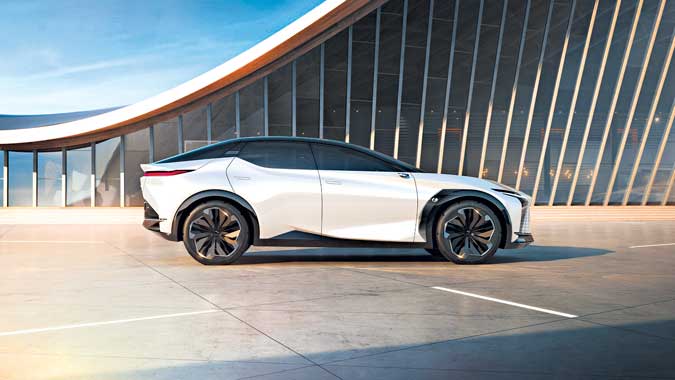EU, US fashion retailers bet bras with wires and a splash of color will sell this spring
LISBON/CHICAGO — After a year of nesting in pastel-colored loungewear, shoppers are opting for styles with floral prints, feel-good slogans, and statement jewelry to jazz up working-from-home outfits as optimism makes a comeback in spring collections, designers and retailers told Reuters.
While neutral, comfortable clothing remains more popular than in a normal spring, retailers from Neiman Marcus to Walmart and Macy’s, Inc. reported growing sales of bright, optimistic color, flowy fabrics or dresses for the first time since the start of the pandemic as shoppers prepared for a return to normal life.
“We’re seeing a return to occasion dresses and even bras with wires,” Marie Ivanoff-Smith, fashion director at department store Nordstrom, told Reuters. “As it gets warmer and more people go outside, we thought people would really want to showcase optimism and joy with prints and vibrant colors.”
So far, ditzy floral prints are up 31% in Europe and 16% in the United States from last year, according to Heuritech, a data firm analyzing millions of pictures a day on social media and catwalks.
Colors seen in catwalks for spring and summer 2021 collections were vibrant pinks and bold blues — “an energizing source of inspiration to help carry us through,” the company said in a Feb. report. While vibrant colors and floral motifs are typical of spring styles, the difference this year is that fashion lines also include nude T-shirts and what Walmart’s head of fashion editorial, Alison Hilzer, called “slouchy cardigans.”
British online fashion retailer ASOS said in an e-mail that it noticed in recent weeks its customers were “into feel-good slogans, brighter colors, and floral accessories as the weather has started to improve and they start to get ready for the summer ahead.”
“While neutral tones are still prevalent, we’re excited to inject some much-needed optimism into our wardrobes with bright accents. We’re loving yellows and greens for (spring),” an ASOS spokesperson told Reuters in an e-mail.
“Bold colors, draping, and light fabrics created a perfect complement to spring with collections from Dior, Loewe, and Dries van Noten,” said Lana Todorovich, president and chief merchandising officer at luxury retailer Neiman Marcus.
“It’s clear that the trend is also about coming out of this, although it’s still a lot about comfortable garments,” H&M CEO Helena Helmersson told Reuters on Wednesday after the Swedish retailer reported earnings.
A ‘NERVE-RACKING’ PLANNING PROCESS
Still, planning has never been harder than this year, as designers used to finishing designs months and sometimes years ahead were forced to adjust collections and marketing in line with the fluctuating circumstances of the coronavirus pandemic.
In general, fashion trend forecasting will look two years out, according to consumer product director at fashion trend analysis company Stylus, Emily Gordon-Smith. But amid the uncertainty of the pandemic, the company advised its clients to play it safe with “seasonless” clothing.
“We tend to plan six months ahead, which is nerve-racking when you think about it,” Nordstrom’s Ms. Ivanoff-Smith said.
“How are you feeling in New York? L.A.? Seattle? We realized we needed to cater to all the scenarios,” Ms. Ivanoff-Smith said. The Seattle-based department store “eased into the spring season” by starting with casual clothes and then moving into special fashions like jewelry and colorful dresses. Still, convincing consumers spoiled by comfy clothing seven days a week to go back to heels and suits may not be easy, Ms. Gordon-Smith said.
“Once consumers are embedded in a comfort-based wardrobe, it’s a very tough mindset to shift,” Ms. Gordon-Smith said. “It’ll be underpinned by a desire to dress up again, but by our predictions that’s not going to happen on a large-scale until 2022.”
‘GET OUT OF SWEATSUITS’
But as the return of spring and progressing vaccination campaigns brought some cheer, Neiman Marcus, Walmart, and Macy’s said they have already begun to see people starting to tire of cozy and comfy clothes.
“We’ve begun to see many of our iconic designers show looks and pieces that reflect a return to customers attending special occasions,” said Neiman Marcus’ Todorovich. Brands like The Row, Brunello Cucinelli and Victoria Beckham have embraced “optic whites that symbolize a sense of refresh, rebirth, and a natural reset,” she added.
“The customer mentality is wanting to get out of sweatsuits and sweatshirt pajamas and put on something that makes them feel pretty and excited to go out,” Walmart’s Hilzer said.
At Macy’s, Durand Guion, vice-president of the department store’s fashion office, said he is even starting to see a return to formal clothes and wedding gowns as states open up.
“Weddings can happen again, gatherings can happen again,” he said. “I think a lot of that momentum will just sort of continue as vaccinations take place.” — Reuters
















